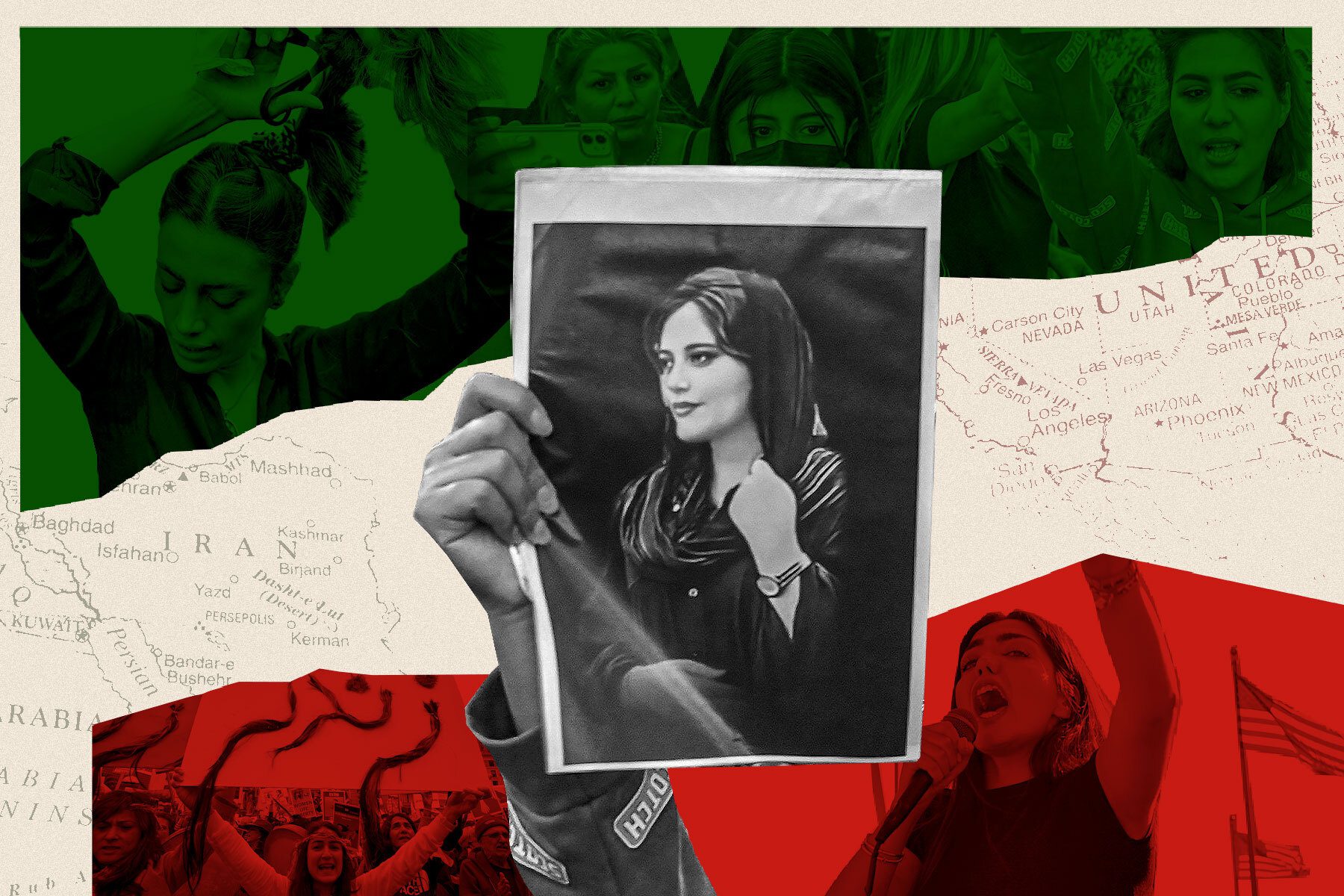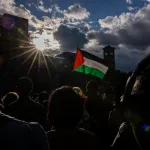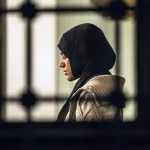Nasrin Rahimieh is astounded by the images coming out of her native Iran.
Women have taken to the streets to burn their hijabs, expose their flowing hair and shave their heads. They’ve sung and shouted, twirled and danced — misdeeds in an Islamic republic that rigidly controls how women dress and behave.
Viewing the footage, “I genuinely just have chills down my spine because I think they know they’re facing death,” said Rahimieh, author and editor of multiple books about Iran and a humanities professor at the University of California, Irvine.
These public acts of defiance follow the death of Mahsa Amini, a 22-year-old woman visiting Iran’s capital city of Tehran from Kurdistan Province before starting university. On September 13, Amini was arrested by Iran’s morality police for allegedly wearing her head covering too loosely, a dress code violation. Three days later, Amini was dead. Although the authorities said the young woman, known to her loved ones as “Jina,” died of a heart attack, her family has denied that she had preexisting health conditions. They maintain that police brutality, specifically blows to the head, caused her demise.
A viral photo of a comatose Amini in a hospital bed has set off weeks of protests in which over 1,400 people have been arrested and up to 133 have been killed, including minors. Both women and men — among them, teachers, professors, grade school and college students — are demonstrating. They’re chanting “woman, life, freedom” and calling for “death to the dictator,” alluding to Ayatollah Ali Khamenei, Iran’s supreme leader since 1989.
“These young women — and men, too, who support them — are showing tremendous courage and conviction,” Rahimieh said. “I think that the world needs to take stock of this moment. Iran has had a history of revolutions and protests, but this moment, particularly because it’s being led by young women, I would have said a mere month ago: ‘Unimaginable.’”
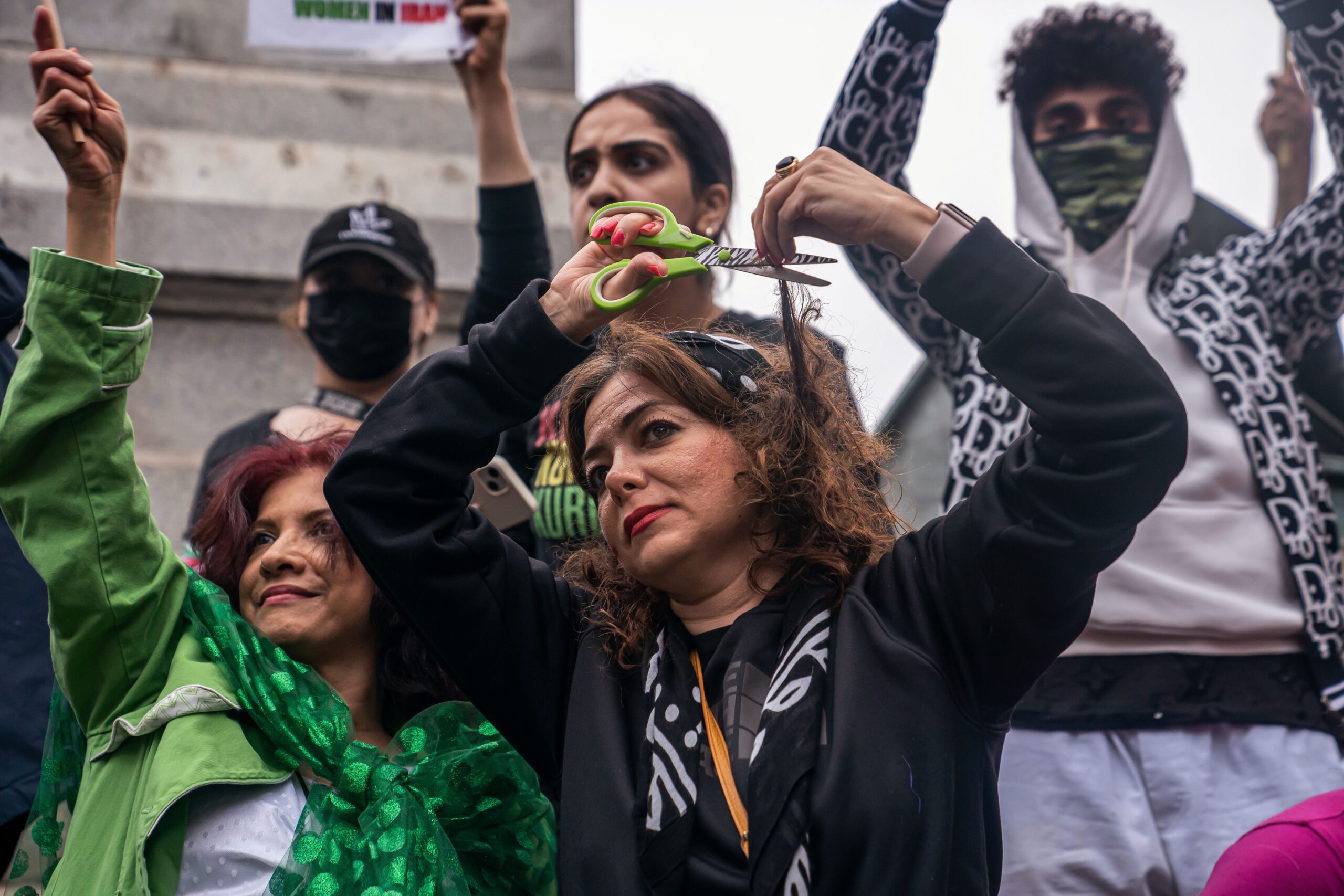
The rebellion in Iran has sparked solidarity protests across the globe. That includes Iranian population hubs in North America. In California, which has the largest population of Iranians outside Iran, students and scholars are mobilizing to raise awareness about Amini’s death. They are organizing candlelight vigils and marches, signing and circulating petitions, and calling on universities and elected officials to recognize the Iranian protests that have garnered statements of support from politicians such as Rep. Alexandria Ocasio-Cortez and Sen. Amy Klobuchar and actors such as Angelina Jolie and Yara Shahidi.
Rahimieh, too, has felt moved to act. At UC Irvine, she participated in a candlelight vigil on campus last week that attracted “mobs of people,” she said, and has also taken part in activities to raise awareness about women’s rights violations in Iran.
More rallies were taking place 55 miles away, in Los Angeles.
There, members of the Iranian Student Group (ISG) at the University of California, Los Angeles (UCLA) feel compelled to take action because of the area’s history. Their campus is in Westwood, home to a community nicknamed “Tehrangeles” because Iranian refugees flocked there after the 1979 Iranian Revolution that saw an Islamic republic replace the secular ruling monarchy. An estimated 87,000 people of Iranian descent live in Los Angeles and hundreds of thousands of Iranian Americans live in surrounding Southern California.
“After the revolution, a lot of Iranians came to UCLA to study,” said Kimia, an ISG board member who declined to use her surname because she does not want her activism around Amini’s death to prevent her from making future visits to Iran. UCLA’s ISG dates back to 1985, making it one of the oldest Iranian student clubs at any American university, she said. “So it just feels even more important for our club to be doing as much as we can,” she continued. “If that means organizing a vigil or finding organizations that donate or work toward better women’s rights in Iran, we wanted to do something that brought the community together and for us to all grieve.”
Rahimieh urges Americans to write to their elected representatives and plead with them to hear the cry of the Iranian people. She has heard those cries directly, both from family members and academics in Iran beseeching her to sign and circulate petitions.
“My colleagues in Iran, university professors who have signed these petitions, what will become of them?” she asked. “It would be a shame…if we in the U.S. more generally didn’t understand how…willing they are to sacrifice everything … to bring this to everybody’s attention. They could have security forces descend on them, arrest them, fire them from university.”
Although she’s grateful that the top newspapers in the United States have covered the crisis, she believes institutions here should be spearheading discussions to educate the public about the plight of Iranians.
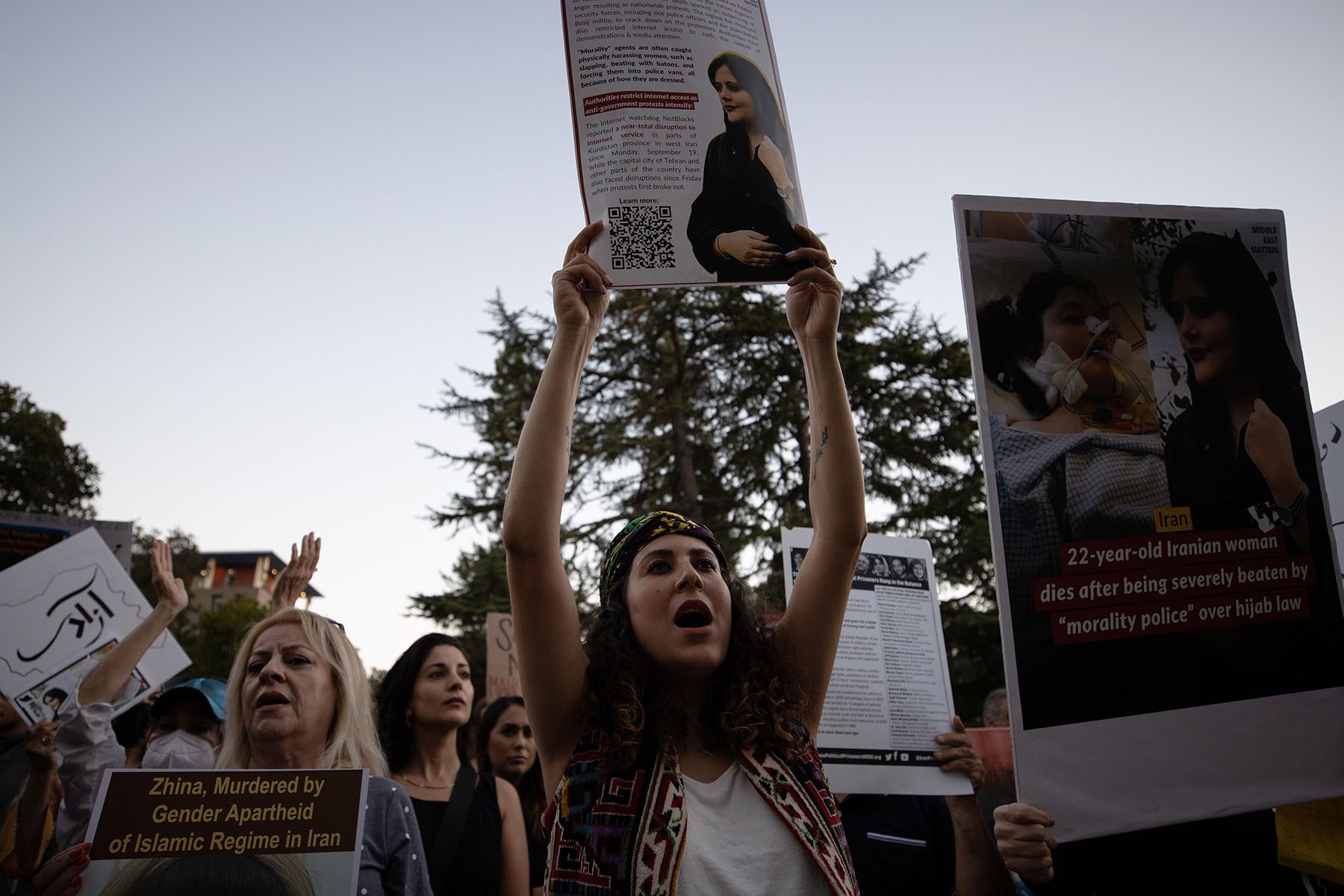
“K-12 schools are a great place,” she said. “I’ve never had a student come to my first-year/freshman seminar and not have read ‘Persepolis.’ So there are ways in which we can speak to our own young people in classrooms.”
Published in 2000, “Persepolis” is a graphic novel about author Marjane Satrapi’s upbringing in Iran before and after the Islamic Revolution. Seven years later, it was adapted for film, earning an Oscar nomination, but school districts in the United States have targeted it for censorship for years. The Franklin Regional School District in Pennsylvania is one of the most recent to restrict the book, announcing in March that it would pull the graphic novel from the ninth-grade honors English curriculum because parents objected to some of the profanity and violence included.
The uptick in censorship concerns Rahimieh.
“For those of us who lived before and after the revolution with very strict censorship rules, this is very worrisome,” she said. “You start trying to control people’s thoughts, you will have autocracy, you will have dictatorship, and I really don’t think we can leave it to the teachers alone to fight this battle on their own. I always recall how my mother, who was a school principal in Iran, was visited by a secret police agent who asked her to remove books from the school library, and I watch in horror the same thing happening in this country.’”
In the meantime, the effort in California to spread the word about Iran’s women’s rights abuses continues.
On September 22, the UCLA ISG organized a candlelight vigil to draw attention to Amini’s death. Members were also involved in planning a “Freedom Rally for Iran” that took place October 1 in downtown Los Angeles. The students have requested that UCLA’s leadership make a formal statement about Amini’s death and the demonstrations that have followed. They would like the university to use green, white and red — the colors of Iran’s national flag — to illuminate the facade of Royce Hall, a building where major campus events take place. UCLA did not respond to The 19th’s request for comment.
Drawing attention to Amini’s death and the Iranians killed for protesting it can lead to action and accountability, Kimia said. She noted how SpaceX CEO Elon Musk offered satellite broadband service to Iranians after the government limited internet use amid the uprising, though the usefulness of Starlink to Iranians has been debated. She also pointed out how last year the United Nations elected Iran to its Commission on Women’s Rights, a move that sparked criticism then and is likely to raise additional concerns now.
“Iran is one of the few countries that are included, and it’s just so ironic that they’re able to do that while they’re killing women in the streets for such minor little offenses,” Kimia said.
With so many Iranian Americans in California, Rahimieh pointed out, families “travel back and forth, so people have a very palpable sense of the kind of difficult circumstances Iranians are enduring day and night.”
Thousands have turned out, chanting Amini’s name and “Death to the Islamic Republic.” “The show of public support — there was a hunger for it,” said Rahimieh, who left Iran shortly before the 1979 revolution.
She added that this marks a unique opportunity for Americans to connect and show solidarity with the people of Iran — something she did not see much of during the Green Movement of 2009. That year, millions of Iranians protested the results of the presidential election, which they said had been fixed to give Mahmoud Ahmadinejad a decisive victory. “Where is my vote?” their slogan demanded.
Farshad Sonboldel, an award-winning poet, researcher and the Middle East studies librarian and area studies collection strategist at the University of California, Santa Barbara, had been part of those Green protests as a student at the University of Tehran.
“The movement was at the time the greatest protest against the Islamic Republic after the 1979 Revolution,” he said. “Many people were killed. Many of our friends were arrested and jailed for years. But I can say the Green Movement was small compared to what’s happening right now in Iran.”

To alert Santa Barbarans to the significance of the event, Sonboldel and a group of professors and graduate students have been heading out to busy intersections and discussing Iran with commuters. “We’ve been making QR codes, asking people to scan to be linked to a video or an article,” he said. “We’re also asking them to contact their local officials and ask them to just talk about it — just a tweet to clarify their stance because now we can see that the European governments and United States are trying to make a nuclear deal with the Islamic Republic at the very same time that people are demanding the overthrow of the Islamic Republic on the streets and being killed.”
Amini’s death matters to both women and men in Iran because the regime controls every aspect of one’s life there, said Sonboldel, who left Iran seven years ago. “The way you dress, the things you eat, you drink, what you watch, your access to the internet, to even TV stations,” he said.
That is not so different, Rahimieh pointed out, from the move to censor books in schools or the rollback of reproductive freedom in the United States. Having fought for abortion access after the revolution, Iranian women empathized with American women when Roe v. Wade was overturned in June, she said. Even now in Iran, most pregnancies are terminated illegally due to restrictions on abortion.
As Roe v. Wade’s reversal has galvanized many American women to fight for their bodily autonomy, Rahimieh encouraged them to also support their Iranian counterparts who’ve endured a repressive regime for generations.
“Iranian women have lived this nightmare of men telling them what to do with their bodies, how to act, how to walk, what they can show, what they cannot show,” she said. “They have had 40-plus years of that. And we could learn from that experience and really stand in solidarity with one another.”
